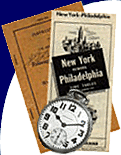

| home | articles | briefs | classifieds | flimsies | interchange |
 |
 |
||||||
|
|||||||
 |
RyPN Briefs January 15, 2007 previous brief ~ return to briefs index ~ next brief Book Review: ''The fire burns much better..., 200 years of steam locomotive exhaust researc'' by Dr. J.J.G. Koopmans, published by Ponsen and Looijen, BV, the Netherlands, 484 pages, softbound This book is a revision of Dr. Koopmans' PhD. thesis from the Department of Mechanical Engineering at the University of Sheffield, UK. I am in no way competent to comment on the quality of the engineering included, but given Mr. Koopmans is now Dr. Koopmans, his work has been demonstrably ratified by those who are. In this exhaustively researched thesis on exhaust theory, Dr. Koopmans explores the historic development of the steam locomotive front end, from the accidental discovery that exhausting steam through the stack can create a vacuum through the grates, through its last era of development by Porta, Waller, et al. Complimentary theory concerning jets, fluid dynamics, and other such more modern technology which could relate are included. This information is well outlined, with considerable supporting data, through page 122. The Holy Grail of front end design is to minimize back pressure in the cylinders by having as freely-flowing an exhaust as possible, while at the same time providing high vacuum to maintain combustion rates in the firebox. In many of the classical designs for front ends, constriction of the nozzles was used to create a high vacuum, which diminished the power available at the cylinder by increasing back pressure, against which the driving pressure would have to push the piston. This seemingly opposing set of requirements is complicated by locomotives working at a wide range of outputs/throughputs, and the difficulties in accurately measuring or estimating many of the required values for design calculation. Dr. Koopmans has considered how the historic designs were developed, both in theory and practice, and then developed some theories of his own which he then tested on an operating locomotive at RTM Historic Tramways in The Netherlands. This experimental work is outlined starting on page 167. The pages between 122 and 167 are full of theoretical development, which I will have to read over several more times to begin to absorb to understanding. Pages 189 through 470 are appendices which relate to the mathematical equations of the different theories and experimental results found historically in front end development. You could spend days with this section, learning about how many systems have been designed over 150 years or so. I have to admit here, I am more a word guy than a number guy. Math has never seemed reliable to me, given it is a fragile kludge based on the seemingly irrational prejudice against the number zero, in that we theoretically can't divide by it. Why not? Then numbers don't work......OK, then the whole system seems to me to be called into question. Also, numeric representations of real life seem like fuzzy photos - they offer a rough estimate of how real things would act if they acted like numbers instead of themselves, sort of as if the old faded picture of the 4-4-0 was more a real 4-4-0 than the 4-4-0 itself. Certainly calculations have a useful ability to help us work out the rough parameters about such things as at about what pressure will that seam rupture, how much stress can that rod take before bending, is there any money left in the checking account, etc. But, to take mathematical results as definitive concepts? Shaky ground from my perspective. I will leave it to say about this section that Dr. Koopmans has provided a wealth of highly specific technical information that people far more comfortable with numeric calculations than myself will have to explore for themselves to truly appreciate in full. The final 14 pages are, from my point of view as a practical, hands-on mechanic, among the most interesting. In two appendices, Dr. Koopmans outlines his method for improving exhaust systems on both full size and model live steam locomotives, based on everything he has demonstrated in the previous 460 pages. You could read the first 122 pages, then skip to page 460-484, and still know how to design a good exhaust system and why. There has been some commentary made, by those who are much better qualified than myself to do so, about some of Dr. Koopmans conclusions - Nigel Day and David Wardale for example - but it seems to me that all these gentlemen have a great deal to offer, in terms of theoretical and practical knowledge, in what is admitted by all to be as much art as science. I'd recommend this book to anybody seriously interested in making steam locomotives as good as they can be. Most operating tourist and museum railroads have no reason to worry about gains in efficiencies, unless they have drafting problems, but for intensively operated lines, real benefits can be gained by application of these new ideas. |
|
Copyright © 1998 thru 2024, all rights reserved, contents may not be used without permission. |